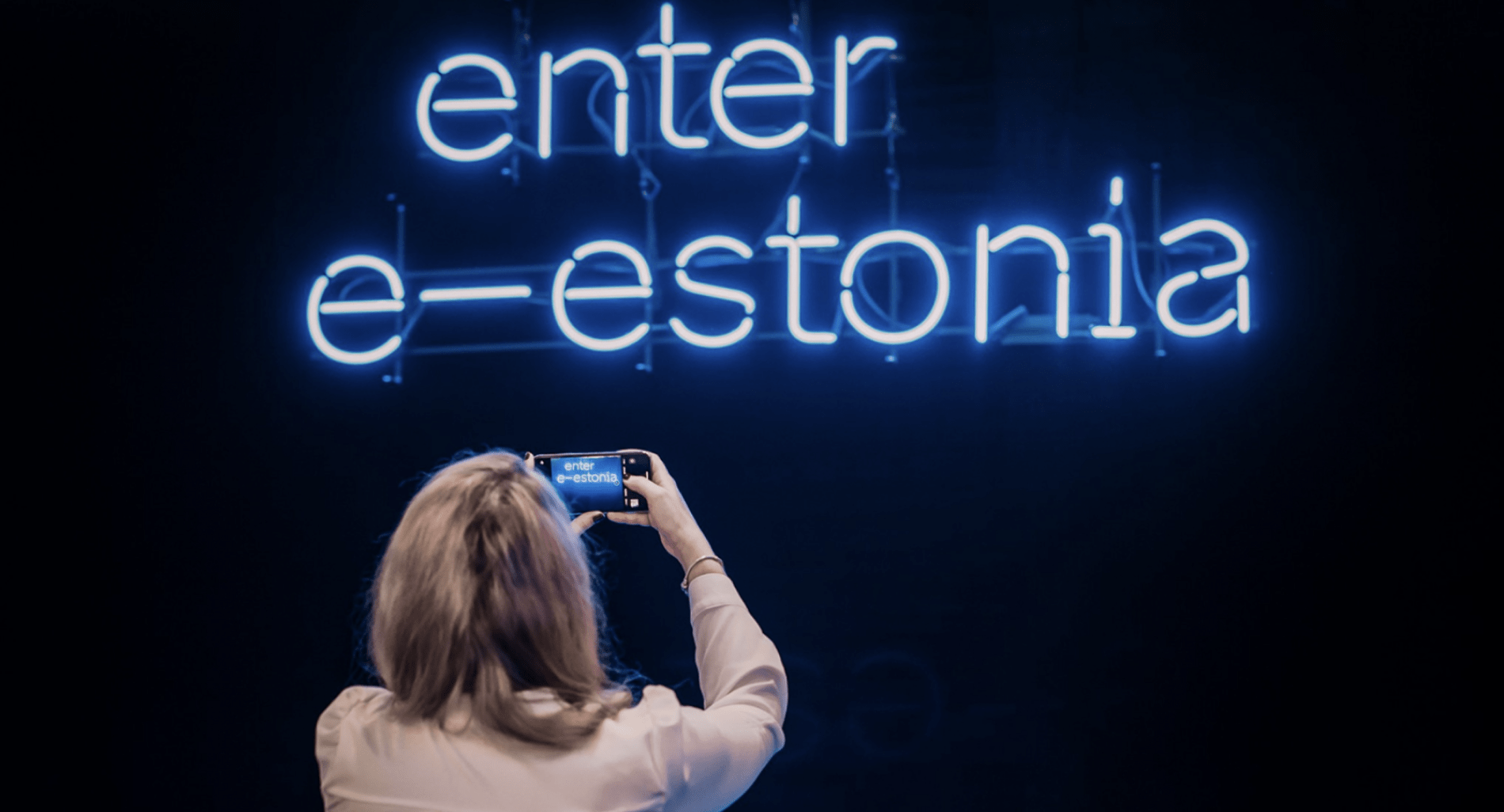In 1991, after 50 years of foreign domination and occupation, Estonia joined the European map with barely any technological systems or resources. As a result, the goal became to build a new infrastructure that would catch up with the technological advancements made in the West. By 2002, Estonia had a fully functioning e-ID and digital signature system, making the country highly advanced digitally. From then on, the country has proceeded to digitize all main services from voting to providing e-residency. Estonia has now become a start-up, tech and innovation mecca.
During the 1990s, Estonia saw the emergence of new design fields. With the transition to a market economy, an appreciation for design as a creator of modern, high-quality environments began to take hold. General design education was established by Bruno Tomber in 1966 when the first program started at the Estonian State Art Institute. Due to the Russian occupation, the word “design” was categorized as too “Western”, and therefore the term “industrial art” was used. Post-occupation the word “design” quickly became part of the common terminology. After the education reform, a generation of digital designers is introducing a new way of thinking about design and implementing theory into real life has become more flexible and practical. As of 2023 it is possible to study for various digital design degrees in Tallinn, Tartu, Viljandi and Pärnu.
Some of the key features of Estonian design
The visuals created for branding and advertisement have strong Dutch influences due to many designers having an educational background from the Netherlands. Over the last few years, there has been an increasing focus on user-centric communication design that has become part of many company departments. Companies are only now realizing the relevance of user interface and experience design to improve their customer journey and increase engagement. Typography is one of the highly developed areas. Many designers like Anton Koovit and Kristjan Jagomägi paved the way for a strong national identity with lettering designs for the Estonian Song Festival, the National Theater and the brand Estonia. Graphic design in particular is mostly dictated by advertising, branding, marketing and design agencies established in Estonia. Some of the most notable examples are brought out later in the article.
In the work of Estonian designers, the northern influence of simplicity and chicness are very prevalent. There is a strong focus on aesthetic beauty and functionality. Humor and focus on sustainability are on top of the mind for digital designers who commonly use word plays to convey messages.
Visual design and branding leaders in Estonia
Here are some of the companies that are worth mentioning thanks to having a strong digital design presence on the Estonian, European and global market.
Estonia brand
Using a standardized design system and tools when presenting a country helps to maintain consistency and establish global awareness. Many nations like Sweden and New Zealand have adopted a unified system for presenting themselves. Estonia took a similar approach in 2017.
When governmental agencies or organizations present Estonia internationally, the same branding and identity is used. Additionally, the Estonia.ee website was created to provide a concise overview of the country. These initiatives were launched in 2016 by the Estonian Design Team, consisting of top professionals in the Estonian design and communication field.
The brand provides a fully developed design system for public and private use, including components on Figma specifically designed for social media, print, animation and video production. Estonia’s brand and identity have gained a lot of recognition for it’s authentic look, paving the way for acknowledging Estonia as a global leader in digitalisation.
Nudist drinks
Nudist is a new-age winery that launched in 2015. The brand makes a wide range of drinks, from non-alcoholic to alcoholic. All their drinks have an ethos of being low in sugar and without additives, making the company already modern and unique with the goal of becoming an eco brand in the future. What sets them even further apart from a typical winery is their digital design used for social media and websites, as well as visuals for their products. Not only do they have engaging labels and packaging for their drinks but they create distinct visuals for card games and other merchandise.
Tartu 2024
In 2024, Tartu together with southern Estonia, will be the European Culture Capital. As a result, many initiatives with a strong digital presence have been launched to create a cohesive look for the project. Their website demonstrates unique typography accompanied by a bold color scheme, more uncommon compared to the national colors often present in national initiatives. The design team focused on bringing color and energy into the long and dark winters of Estonia. The identity had to be user-friendly for partners around Europe but also be attractive to a very wide target group, scalable throughout the years. The designers brought in stamp elements that depict motifs from Estonian folklore which create unity among the southern region of the country. This digital work won a Bronze for the Best in Graphic and Media Design/ Social Cohesion, New Normality and Crisis Management at the Estonian Design Awards 2022.
Rewarding the skills
In 2022, the GROW Design Leadership Programme finally arrived in Estonia. As a result, Estonia received its first ten internationally recognised Design Leaders. This has been a great step into optimizing businesses through design and recognizing the importance of high-quality design and digital design professionals.
Since 1998, the Golden Egg Festival has been recognizing and rewarding the most exciting agencies and clients in the marketing and advertising industry. Despite the Golden Egg focusing on advertising and marketing, visual and digital design play a vital role in the success of the projects. The award is also given out for animations, typography and illustrations. In 2022, the Golden Egg Festival introduced digital design categories to the award list. Anniken Haldna, the Golden Egg head organizer has said: “We are also pleased to see that the digital design categories launched last year have been well received by the industry, and the double-digit number of works has been submitted to both the UX / UI category and the cross-environmental design.” Seeing digital design categories emerge and being included, shows that the classical approach to making business and expanding services is slowly dying out. Companies are seeing the value in incorporating digital design to their offerings.
Resources
https://e-estonia.com/story/
https://kuldmuna.ee/?lang=en
Illustration for kuldmuna https://defol.io/kuldmuna/2022-paralleelium-nft-collection-1
https://www.disainioo.ee/estonian-design
https://www.kul.ee/en/arts-and-creative-economy/design
https://www.behance.net/gallery/153094387/Capital-of-Culture-Tartu-2024-rebrand
https://brand.estonia.ee/?lang=en




